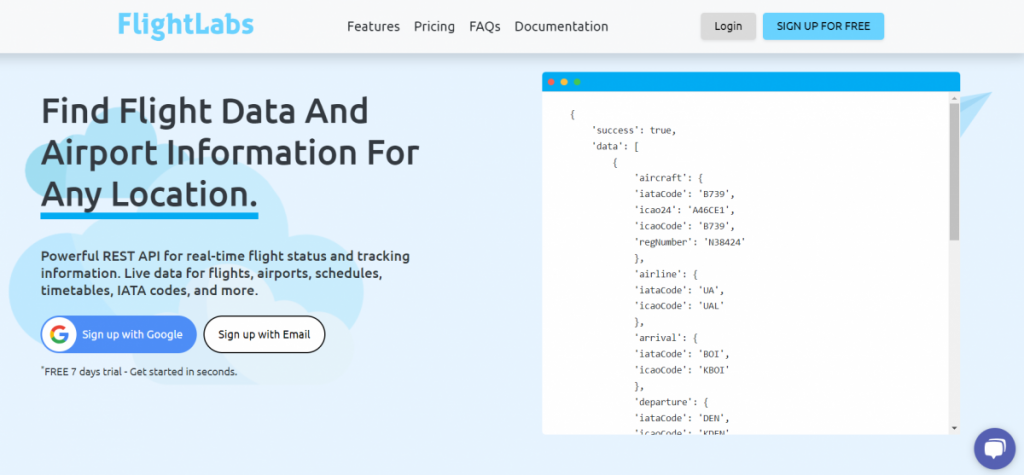Flight Status Tracker APIs have become an essential tool for developers looking to integrate real-time flight information into their applications. Whether you’re building a travel app, a flight booking platform, or an airport management system, a Flight Status Tracker API can provide you with access to accurate and up-to-date flight data. In this quick guide, we will walk you through the key steps and considerations for developers when using a Flight Status Tracker API.
Step 1: Choosing the Right Flight Status Tracker API

The first step in using a Flight Status Tracker API is to choose the right one for your application. Consider factors such as data accuracy, coverage, reliability, and ease of integration. Look for APIs that provide real-time updates, have a wide range of airlines and airports in their coverage, and offer clear documentation and support.
Step 2: Understanding API Documentation
Once you have chosen a Flight Status Tracker API, it’s essential to familiarize yourself with its documentation. API documentation provides detailed information on how to integrate and use the API effectively. Look for documentation that is clear, well-structured, and provides code examples. Understanding the API’s endpoints, parameters, and response formats is crucial for successful integration.
Step 3: API Authentication
Most Flight Status Tracker APIs require authentication to ensure secure access to their data. Common authentication methods include API keys, OAuth, or token-based authentication. Follow the API documentation to obtain the necessary credentials for authentication. Keep in mind that different APIs may have different authentication requirements, so ensure you understand the process specific to the API you are using.
Step 4: Making API Requests
With authentication in place, you can start making API requests to retrieve flight information. The API documentation will provide details on the available endpoints and parameters. Typically, you will need to provide parameters such as flight number, departure and arrival airports, and dates. Construct the API request URL with the required parameters and make the request using the appropriate HTTP method, such as GET or POST.
Step 5: Handling API Responses
Flight Status Tracker APIs return responses in a standardized format, usually in JSON or XML. Once you receive the API response, parse it to extract the relevant information. The response may include details such as flight status, departure and arrival times, gate information, delays, and more. Handle the response data appropriately based on your application’s requirements, such as displaying it to users or performing further processing.
Step 6: Error Handling and Exception Handling
When working with APIs, it’s crucial to handle errors and exceptions gracefully. Flight Status Tracker APIs may return error codes or messages in case of invalid requests, authentication failures, or other issues. Ensure your application can handle such errors and provide meaningful feedback to users. Additionally, consider implementing appropriate exception handling mechanisms to handle any unexpected errors that may occur during API integration.
Step 7: Caching and Rate Limiting
To optimize API usage and prevent unnecessary API calls, consider implementing caching mechanisms. Caching allows you to store API responses locally for a certain period, reducing the need to make frequent API requests for the same flight information. Additionally, some Flight Status Tracker APIs may impose rate limits to prevent abuse and ensure fair usage. Understand the rate limits imposed by the API and implement rate limiting strategies in your application to avoid exceeding the allowed limits.
Step 8: Testing and Monitoring
Before deploying your application, thoroughly test the integration with the Flight Status Tracker API. Test various scenarios, such as different flight statuses, delays, and cancellations, to ensure your application handles them correctly. Additionally, implement monitoring mechanisms to track the API’s performance and uptime. Monitoring helps you identify and resolve any issues promptly, ensuring a smooth experience for your application’s users.
To make use of it, you must first:

- Go to GoFlightLabs API and simply click on the button “Sign-Up” to start using the tool.
- After signing up in GoFlightLabs API, you’ll be able to use Free Trial.
Read more: Best ip geolocation api tips to use it
Conclusion
Integrating a Flight Status Tracker API into your application can provide valuable real-time flight information to your users. By following these quick guide steps, you can successfully integrate and utilize a Flight Status Tracker API in your application. Remember to choose the right API, understand its documentation, handle authentication, make API requests, handle responses and errors, implement caching and rate limiting, and thoroughly test and monitor your integration. With these considerations in mind, you can create a seamless and reliable flight tracking experience for your application’s users. Happy coding!
